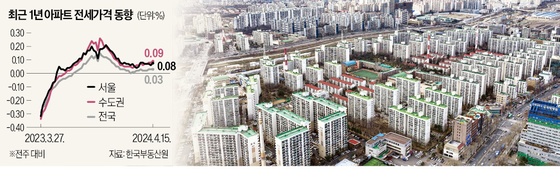"중국 원유 수요, 올 2% 증가 그칠 것"
작년 7% 증가보다 둔화

국제에너지기구(IEA), 석유수출국기구(OPEC), 미국 에너지정보청(EIA) 자료를 종합하면 올해 원유 수요는 작년보다 하루평균 128만배럴 늘어날 것으로 예상된다. 작년에 2014년 대비 하루평균 157만배럴 늘어난 것보다 적다.
플래츠차이나에 따르면 올해 중국의 원유 수요는 지난해보다 2% 증가하는 데 그칠 것으로 보인다. 작년 1~11월 중국 원유 수요가 전년 동기 대비 7% 늘어난 것과 대조적이다. 미국 휘발유 소비도 지난해 초엔 유가하락 효과로 반짝 급증했으나 1년 전체로 보면 고작 2.4%(하루 22만배럴) 늘어났을 뿐이다. 미국 원유재고는 작년 말에 연초 대비 37.5% 늘었으며, 올해도 재고량은 계속 증가할 전망이다.
OPEC 회원국은 지난해 12월4일 모임에서 최대 생산량조차 결정하지 못하고 헤어졌다. 최근 사우디아라비아와 이란의 수교 단절 등으로 OPEC이 앞으로 감산 결정을 내릴 가능성은 완전히 사라졌다. 사우디와 이란의 분쟁은 일시적으로 유가를 끌어올렸으나 곧 방향을 바꿔 이제 원유공급 증가 및 유가 하락요인으로 해석되고 있다. 사우디는 작년 3월 이후 꾸준히 하루 1000만배럴 이상을 뽑아내는 중이다.
또 다른 대형 산유국 러시아도 루블화 가치가 약 20% 떨어진 것을 계기로 작년 12월 생산량이 사상 최대치인 하루 1082만배럴까지 급증했다.
러시아는 올해도 이 정도 생산 수준을 유지할 것으로 예상된다. 지금 원유 생산량을 줄이는 곳은 (셰일오일 생산이 감소하는) 미국뿐이다.
이런 정보를 종합하면 두 가지는 확실하다. 하나는 저유가 국면이 대부분의 예상보다 훨씬 오래갈 것이란 점이다. 몇 달이 아니라 몇 년은 간다고 생각해야 한다. 두 번째는 현 가격 수준에서 유가의 균형 구간이 형성됐다는 것이다. 산유국은 재정 허리띠를 더 졸라매야 할 처지다.
-----------------------------------------------------------------------
한국경제신문은 글로벌 에너지 정보제공업체 플래츠(Platts)의 에너지 관련 칼럼을 독점 게재합니다.
반다나 하리 수석애널리스트
Singapore -- Crude plummeted to new lows not seen for a decade at the end of December to enter 2016 battered and bruised, as the market fixated on a stubborn and potentially worsening supply glut, and forecasts of a slowdown in world demand growth.
The gloom-and-doom view was reinforced by oil producers Saudi Arabia and Oman unveiling austerity budgets for the new year marked by hefty spending cuts, subsidy reductions, and tax increases.
News of Chinese Purchasing Managers‘ Index dropping further in contraction territory to 48.2 in December sent global stock markets into a tailspin on the very first working day of the new year, suggesting growing worries over a slowdown in the world’s second largest economy.
On the supply side, attention turned to the lifting of nuclear sanctions on Iran, potentially within January, and the resultant new tide of crude barrels from that country. Though a senior official at the National Iranian Oil Company reassured that Iran would release the initial incremental 500,000 b/d “gradually” so as not to provoke a further slide in prices, the mere prospect of additional supply hung heavy on a sentiment-driven market.
The US lifting export restrictions on its crude as part of a government spending bill signed into law by President Barack Obama December 18 was a historic move, but not one expected to have much impact on the global market in the near term, especially as the Brent-WTI spread had been consistently narrowing through the last quarter of 2015.
The spread, which flipped to negative for a few days following the US move, can now be expected to remain tight, which ironically, erodes the attractiveness of US crudes vis-a-vis competitive light sweet grades priced off Brent.
The export avenue is expected to provide little relief to US crude stock levels, which closed the year 37.5% above the five-year average, and are expected to continue swelling in 2016.
A far more anticipated move, of the US Federal Reserve raising interest rates by a quarter percentage point at its mid-December meeting, was well baked in to the dollar‘s strength and consequently oil prices in the weeks preceding.
The latest forecasts by the International Energy Agency, OPEC, and the US Energy Information Administration on average point to 1.28 million b/d growth in global oil demand in 2016, much below the estimated 1.57 million b/d average increase in 2015.
Oil demand in China, world’s second largest consumer after the US and the biggest driver of growth for the past several years, rose 7% on year to an average 11.1 million b/d over January-November 2015, but is expected to register a relatively pale 2% increase in 2016, according to Platts China Oil Analytics.
India boasted a far hotter 8.7% jump in oil demand in the first 11 months of 2015, but at 3.78 mil b/d, its consumption is just a third of China‘s and hence incapable of moving the needle on a global scale like its giant neighbor to the north did.
US gasoline consumption, which accounts for almost a tenth of world oil demand, created a lot of excitement at the beginning of 2015 with a major boost even before the driving season had kicked in, but averaged a tepid 220,000 b/d or 2.4% estimated growth for the whole year to 9.1 mil b/d.
Against this backdrop of faltering consumption growth, OPEC stood its ground at its December 4 meeting, omitting even the mention of a production target in its communique, effectively disowning any notional ceiling on output.
Saudi Arabia, which persuaded OPEC to defend its market share against rising non-OPEC supply at the group’s pivotal November 2014 meeting, has consistently maintained output above 10 million b/d since March last year.
The eruption of sectarian conflict between Saudi Arabia and Iran at the start of January prompted a short-lived rally in oil prices, which soon reversed course, as the market interpreted the developments as signaling a potential escalation in price war between the two major Middle Eastern producers to defend the market share for their crude, and snuffing out any remaining possibility -- however remote -- that OPEC may yet decide to rein in production to put a bottom under oil prices. In short, the strife became yet another bearish factor weighing on the oil markets.
Russia, the other oil-producing giant, hit a new record high of 10.825 million b/d in December, helped by a 20% jump in ruble-denominated upstream capital expenditure in 2015, and expects levels to remain flat in 2016.
The only sign of a receding tide right now is US production, which eased from a high of almost 9.7 million b/d in April 2015 to 9.3 million b/d in October, according to the latest available monthly EIA data.
The EIA expects 2016 output to drop to an average 8.8 million b/d from 9.3 million b/d in 2015 due to unattractive returns, companies retreating further into the core areas of major tight oil plays, and investment cutbacks reducing drilling rigs and well completions.
However, that 500,000 b/d decline is incapable of providing succor to a market overwhelmed by production continuing at full tilt elsewhere and brimming storages.
Importantly, it‘s worth bearing in mind that any price recovery spurred by a major drop in US shale output is likely to bring that shut-in production right back on stream.
That points to two certainties: the market rebalancing is going to be far more drawn-out than most are imagining at this point -- think years rather than months. Second, the price level that snuffs out substantial US output and the one that brings it back defines the new ”equilibrium band“ for the time being. It’s time for producer countries to tighten their fiscal belts. --Vandana Hari
-
기사 스크랩
-
공유
-
프린트




![넷플릭스, 가입자 순증 꺾였다…악재 쏟아진 기술주 [글로벌마켓 A/S]](https://timg.hankyung.com/t/560x0/photo/202404/B20240419072033320.jpg)








